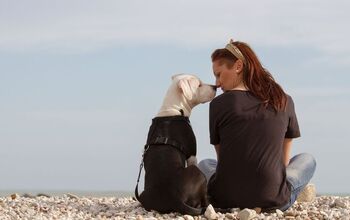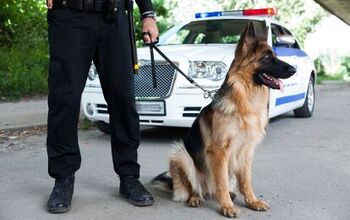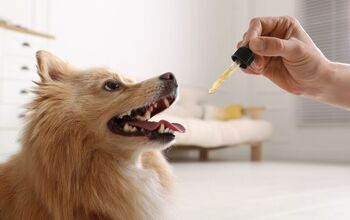Cortese

Cortese Basics
Petite, adorable, and happy-go-lucky, the Cortese will charm your pants off in an instant. This designer dog breed comes from crossing the cute Pembroke Welsh Corgi with the sweet Maltese, resulting in a hybrid that combines the best traits of parents. Intelligent, affectionate, and friendly, Cortese dogs make fantastic family pets, as they’ll get along with other dogs and children. They are not particularly distrustful of strangers, either, so don’t expect your cute little mix to be a good guard dog.
Slightly strong-willed, these pooches might be smart, but can be a handful when it comes to training – so if you’re a first-time dog owner, you might be in for a challenge. Either way, a Cortese dog will quickly find the way to your heart, both with their goofy antics and a cuddly side that makes them true lapdogs.
While it might be the cute looks that initially drew you to the Cortese, it’s their beautiful personality that will truly steal your heart.
No one can tell with certainty when and where were the first Cortese dogs created. Designer dogs are a fairly recent trend in breeding, with most crossbreeds intentionally created only in the last few decades. While there is no documented history of first crosses between Corgis and Maltese dogs, we can assume that this designer dog was created in the late ‘90s or ‘00s, when most of the new designer dog breeds were.
The same can’t be said for Cortese’s parents, though. Pembroke Welsh Corgi is believed to be an ancient breed dating to the 10th century, but the breed itself has been refined and established in the 1920s when it was first recognized by the Kennel Club in the UK. Maltese touts an equally impressive history, with ancient pictures and art depicting dogs very similar to today’s breed. The breed was recognized by the American Kennel Club in 1888, though, and remains one of the most popular lap dog breeds to this day.
None of the designer dog breeds are recognized by the American Kennel Club, including the Cortese, so none of them have an official pedigree and a set of breeding standards to adhere to. With designer dogs, especially first-generation crossbreeds, it’s difficult to have a pedigree standard in the first place, because it is difficult – not to say impossible – to predict how the litter will turn out looking, as some puppies can look more like one parent and the other could favor the second breed in the mix. Nevertheless, pedigree aside, you should make sure to get a Cortese puppy only from a reputable breeder. Responsible Cortese breeders put in the effort to screen for genetic diseases, carefully select the parents of the litter and strive to get as close to uniform litters as possible. This will help ensure your puppy really does have the best traits of both parental breeds and that they are as healthy as can be.
The Cortese is not an overly demanding breed when it comes to their dietary needs. Like most dogs, they will do well on high-quality dry dog food that is formulated to meet their needs – a small breed, moderately active dog in a specific life stage (puppy, adult, or senior formula). Be sure to choose a premium brand, which uses natural, wholesome ingredients with real meat as the first ingredient in the formula, rather than cheap, filler-laden kibble that can do more harm than good in the long run. It’s worth noting that, thanks to the Maltese in the mix, your Cortese dog might have a sensitive tummy and be a picky eater, as Maltese are known to be finicky with food and often have food allergies. Avoid foods with common allergens such as grains or chicken, and don’t offer food with high-fat content.
Another important aspect of Cortese’s diet is the portion size. As this is a small breed dog with a propensity for obesity, you should never free-feed them or overindulge them in treats and snacks. Set a meal plan with recommended portion size (which you can find on the label of the food you’re giving them) and don’t go overboard – these pooches gain weight fairly easily and it can cause a lot of health issues down the road.
Intelligent, affectionate, and friendly, Cortese dogs make fantastic family pets, as they’ll get along with other dogs and children.
Intelligent and eager to please, Cortese will love to learn new things. While this goes in your favor, you should have in mind that these designer dogs can have a bit of a stubborn streak which can make training more difficult. Stick to positive reinforcement methods, offering praise and (low kcal) treats for a job well done, rather than resorting to punishments and time-outs when your new pet does something they are not supposed to. Positive reinforcement training won’t only provide more efficient results but will also strengthen the bond you have with your pet.
Ideally, you should start with the basic training when your Cortese puppy is around 2 months old, but nothing too complex as their attention span is not the greatest at this stage – commands such as sit and stay are a good starting point. From there you can work on potty training, crate training, and basic obedience. It’s important to combine training with early socialization as exposure to different pets, children, and strangers will help shape your Cortese into a friendly, laid-back dog.
Both the Maltese and the Pembroke Welsh Corgi are small dogs, but there is somewhat of a big difference between their usual weights which will be reflected in the expected maximum weight for the Cortese. These designer dogs can weigh anywhere from 5 to 28 pounds, depending on which parental breed they favor. Still, these will be petite dogs either way, making them great pets for apartment dwellers.
While it might be the cute looks that initially drew you to the Cortese, it’s their beautiful personality that will truly steal your heart. These dogs are people-oriented, with affection and sweetness to spare. They grow very close to their owners, which they will shower with love and cuddles and will love nothing more than to spend time close by their side. It doesn’t surprise, then, that the Cortese is touted as a fantastic family dog – they love being around people, other pets, and have a generally sweet disposition.
Of course, for your Cortese to blossom into a well-behaved, well-rounded dog, you will have to train and socialize them on time. If you neglect to do so, some less ideal aspects of their personality could come to the forefront, such as yappiness (they tend to be big barkers) or small dog syndrome.
As a first-generation mix of the Maltese and Pembroke Welsh Corgi, the Cortese is susceptible to some of the same diseases that can affect their parents. These include hip dysplasia, eye conditions such as cataracts. If the puppy favors the Maltese, allergies are a potential problem, and if the Corgi genes are the more prevalent ones, keep an eye out for intervertebral disc diseases and degenerative myelopathy. Of course, like all small breed dogs, the Cortese will also be at risk for obesity and oral health issues, so establish a balanced lifestyle early on: healthy diet, sufficient exercise, and of course, a stellar dental health routine to keep plaque and tartar at bay.
Make sure never to get puppies from backyard breeders as their irresponsible breeding practices all but guarantee a genetic issue and neglect puppies experience in their first days could lead to a range of other issues, from infectious diseases to parasites.
There’s not enough data on the Cortese for experts to be able to determine an actual lifespan for the breed, but based on the maximum lifespans of their parents, we can have a rough estimate. The expected lifespan of a Cortese dog is between 12 and 15 years, which is an average number for dogs of their size. Of course, for your pet to reach those golden years in good health, you will have to do your part: a complete and balanced diet, plenty of exercise, and regular vet checkups are essential if you want your pet to reach their maximum lifespan.
While the Cortese might not be a highly active breed, they still need daily exercise to stay happy and healthy. Daily walks, hikes in the outdoors, and quality playtime are all essential to your new pet’s wellbeing. Roughly 60 to 90 minutes of activity will keep obesity at bay and your dog’s extra energy productively spent.
Don’t forget to stimulate your smart Cortese mentally, as well – mental exercise is important as physical. Get them interactive or puzzle toys that will keep them sharp and occupied, but most importantly stave off boredom, keeping your pet out of trouble.
Slightly strong-willed, these pooches might be smart, but can be a handful when it comes to training – so if you’re a first-time dog owner, you might be in for a challenge.
As a designer dog breed, the Cortese isn’t recognized by any of the major kennel clubs, such as the AKC or TKC. This doesn’t mean, however, that there aren’t any clubs or organizations that recognize the Maltese x Pembroke Welsh Corgi mix as an actual breed: Designer Breed Registry (DBR) and the International Designer Canine Registry (IDCR) both list the Cortese as a recognized breed.
Cortese dogs usually have medium to long hair, usually fluffy and soft to touch. They do not shed excessively and will need a few weekly brushing sessions to keep those pretty locks tangle-free. If your pet’s coat is more similar to that of the Maltese, longer and silkier, you might need to trim it every once in a while, either professionally or on your own with a good pair of dog clippers. Maltese dogs have a hypoallergenic coat, so if your Cortese favors this parental breed, it’s highly likely their coat will be hypoallergenic, too.
When it comes to coat colors, there are all sorts of possibilities – each Cortese will be unique. In addition to the most common white and tan, their coats can be red, black, brown, or a combination of solid colors. Cortese is not a high-maintenance dog when it comes to their grooming routine, so they are suited for beginners and people looking for a dog that doesn’t shed too much and doesn’t need frequent professional grooming.
Cortese litters can range from 2 to 8 puppies – and each of the puppies in the litter can look different. With F1 mixes, all kinds of surprises are possible: some dogs might look more like Corgis, others like the Maltese, and some will be a unique mix of the two. The only certainties are that the Cortese will be a small breed dog and endlessly adorable!
While insanely cute, Cortese puppies are very fragile when young due to their small size. Avoid big crowds or leaving your puppy unattended with children under the age of 5 as they could get hurt quite easily.
The best time to lay some good foundations is while your Cortese is still young, so don’t be blindsided by their cuteness and charm: start training and socialization early on. You can begin teaching basic commands at 7 or 8 weeks of age and progress to potty training when they reach 12 to 14 weeks of age. In addition to training, make sure you introduce your puppy to other pets and strangers while they are young, to avoid them becoming shy and aloof or even aggressive towards other dogs and people when they grow up.
Photo credit: Erik Lam/Shutterstock

A proud mama to seven dogs and ten cats, Angela spends her days writing for her fellow pet parents and pampering her furballs, all of whom are rescues. When she's not gushing over her adorable cats or playing with her dogs, she can be found curled up with a good fantasy book.
More by Angela Vuckovic























